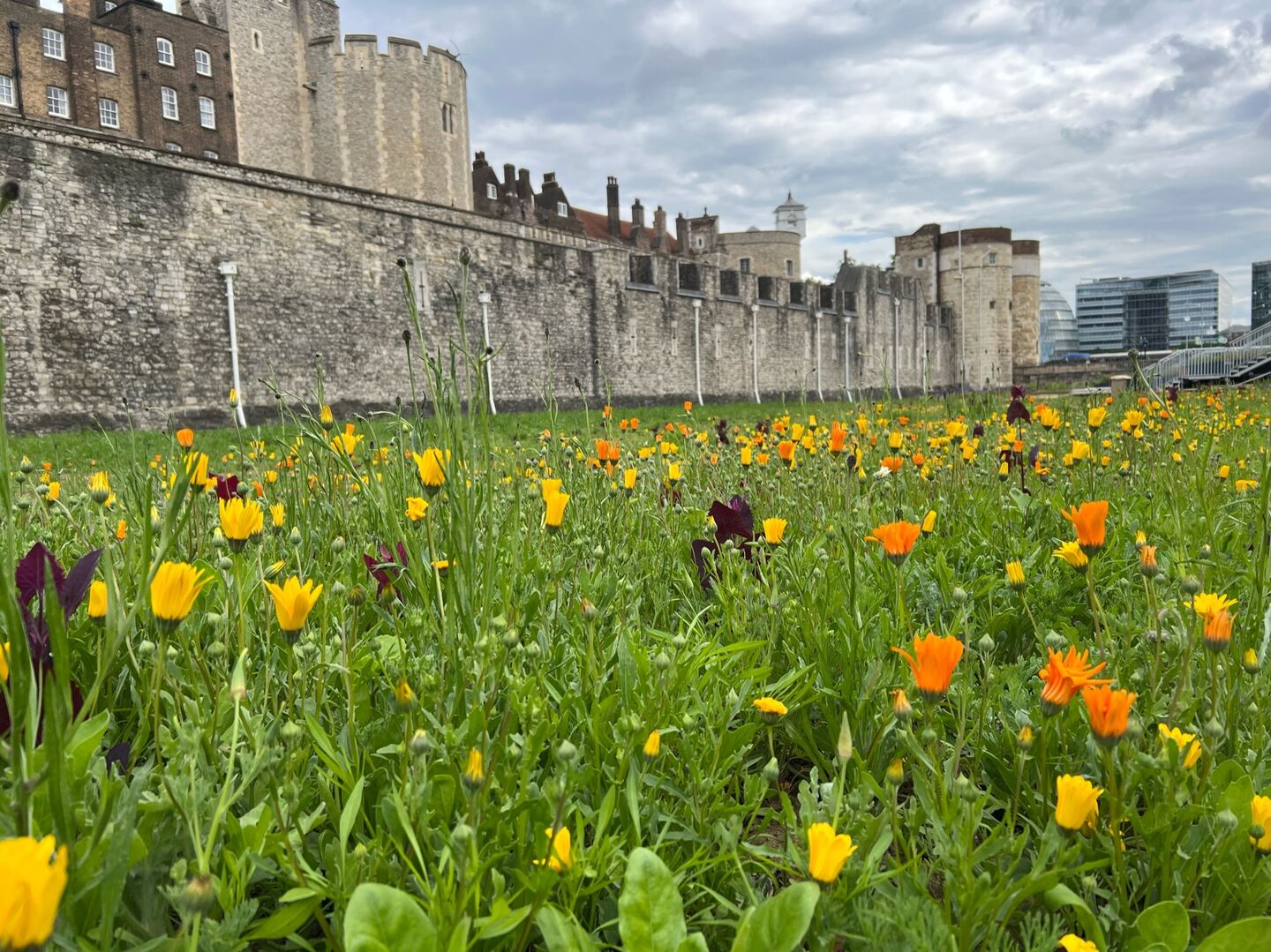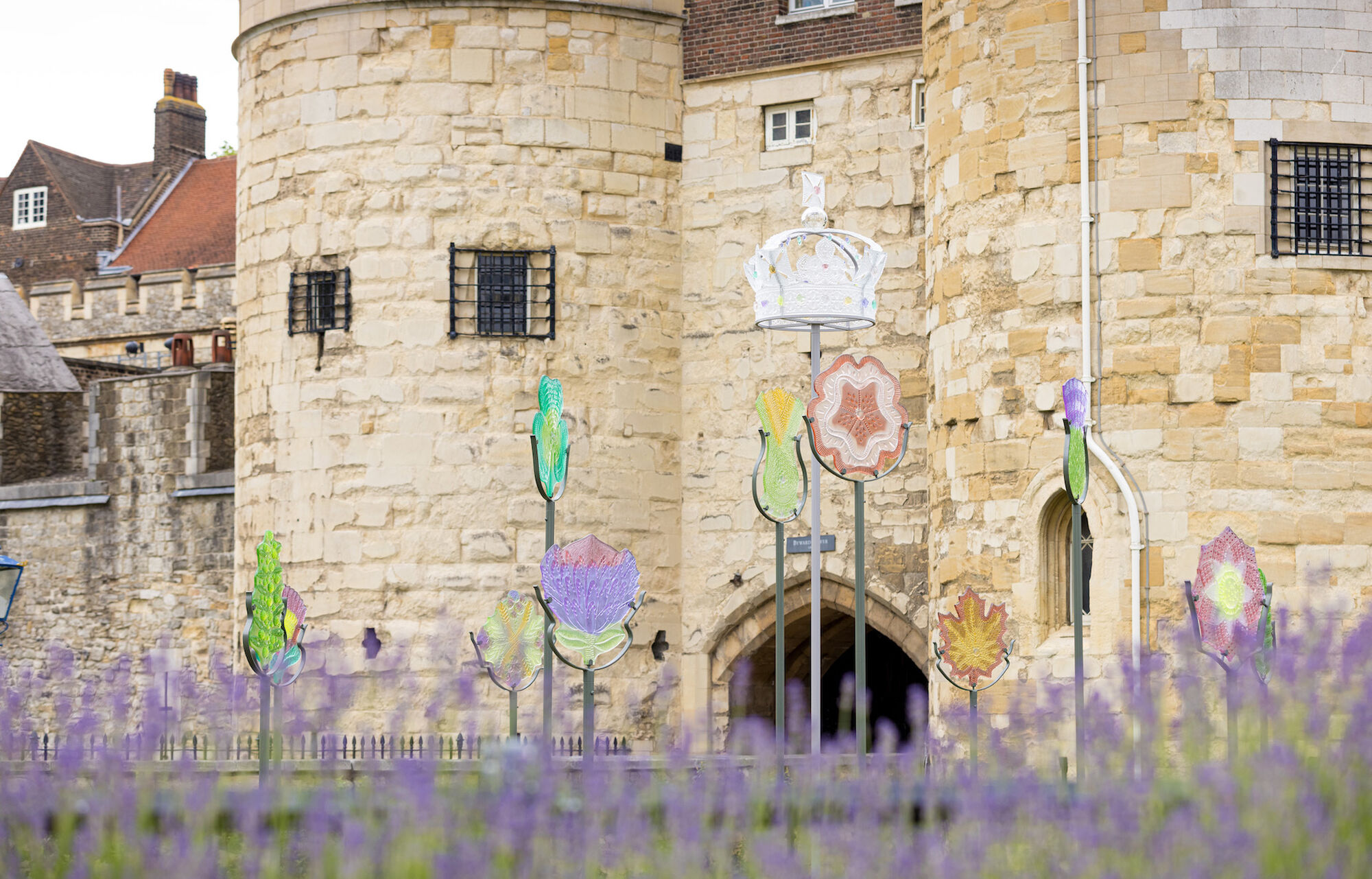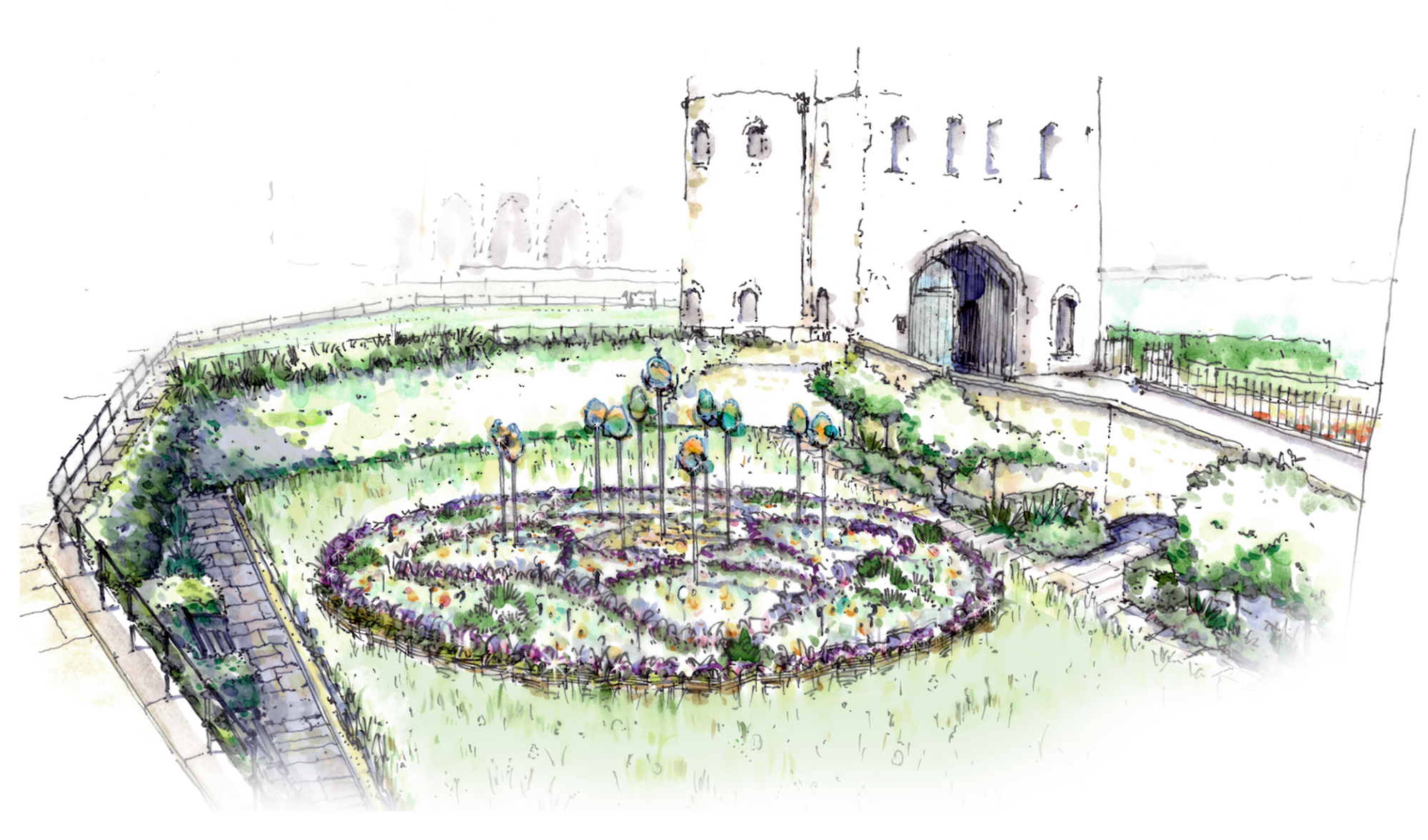

A Royal Opportunity: Designing the Tower of London Superbloom and the Queen’s Garden
I was a punk back in 1977 when the Sex Pistol’s ‘God Save the Queen’ was first released.
Alongside my friends, I’d hunt for the local pubs that had it on their juke box and then play it loudly on repeat. 1977 was, of course, Her Majesty the Queen’s Silver Jubilee and, at that time, I must confess that I wasn’t particularly invested in the celebrations; I was very much the surly teenager, debunking the establishment, much to the annoyance of my parents who were appalled by my lack of respect for Britain’s rich cultural traditions and heritage.
45 years on, here we are in 2022. It’s the year of the Queen’s Platinum Jubilee and I am now heavily involved in a project that could not be more about our Queen and Britain’s heritage if it tried.
Yet for me, this isn’t a project about the monarchy nor is it about tradition; it is much more about celebrating Queen Elizabeth II’s remarkable life of service and a perfect example of how a creative idea can shock the system.
“No ordinary landscape conservation project”
Superbloom is no ordinary landscape conservation project set in a World Heritage Site and Scheduled Ancient Monument. Instead, it is a joyous shout out for change; a marker in how we can move forward in the way we think about and manage our heritage for the benefit of future generations. Historic Royal Palaces (HRP) should be applauded for how they have conceived and implemented this audacious event, and I feel very confident it remains consistent with my teenage sensibilities.
So what makes it special? I think the idea of the Tower of London moat packed with wildflowers, vibrant with colour and buzzing with life is such an extraordinary shift from its traditional repressed, lifeless and polite mown grass character. Not only will there be this swoosh of floral impact wrapping the Tower but the journey through the Moat will be punctuated by additional moments and interventions.

From the giant slide at the entrance to Quists’ swarm of metal insects at the exit, through multiple unique photo opportunities, an evocative soundscape by Erland Cooper and moody evening lighting by Nipek, the experience is all underpinned by a common thread of woven willow that frames the flowers and twists up into the memorable outlook and ‘Nest’ by artist Spencer Jenkins.
Perhaps most importantly, HRP have said this is just the beginning of a new landscape setting for the Moat that will set it up to play a more important role in the green infrastructure of Tower Hamlets and London going forward. It is set to serve as an escape for the local community, a must-see visitor attraction and a haven for wildlife, especially pollinators and birdlife. I seriously believe it will be a project to inspire and inform the transformation of multiple underperforming green spaces across the UK and abroad.
“A simple story about environmental issues”
The Queen’s Garden is different. It is more about heritage and a story from the Queen’s life. By taking the 1953 Coronation gown as the inspiration for the garden, I knew this would be exploring something different for me - in fact James Clarke, my colleague on the Superbloom project, remarked that “it’s not your usual approach” - and he was right in some respects.
However, most of my work involves a narrative or underlying concept and a simple story about environmental issues and this is exactly the same here.

The big challenge was to create a garden that linked the Queen’s coronation to the flowers of Superbloom and Sir Norman Hartnell’s Coronation gown, which seemed a perfect reference point and one with flowers at the heart of the story.
The design of the gown suggested a geometry and basic colour scheme for the garden whilst the embroidered flowers, representing multiple nations, offered a sense of the richness and diversity of Superbloom. By representing these flowers through glass art, we wanted to express the exquisite craftsmanship of the original dress and bring some of that sparkle into the garden experience itself.
Whilst I developed the original idea and broad concept for the design and details of the Queen’s Garden, the final scheme will be a celebration of collaboration. Nigel Dunnett, Professor of Planting Design and Vegetation Technology at the University of Sheffield, has fleshed out the preliminary concept for a contemporary knot garden using species that reflect the subtle silvers and ivory of the original dress but highlighted with pops of bright colour to echo those original embroidered flowers.
The flowers on the gown represented the four home nations and the wider dominion of the Crown at the time. It would be impossible to use real live plants for all of the species depicted, and so I saw the opportunity to make a feature of these using glass art and to top the whole display with a glass crown. The artists Max Jaquard and Dawn Bendick have taken on this challenge with great skill and have made a collection of beautiful and colourful glass objects that will sit proudly above the garden on vertical poles: a nod to the mediaeval tradition of poles and carved heraldry that anchor those gardens.
“A very special project for me personally”
When you study the story of the Coronation gown, you discover the very personal design dialogue that took place between Sir Norman and the Queen, then the team who made the prototypes and samples and ultimately the spectacular garment itself.

Whilst in no way as personal, the Superbloom will be a similar product of debated ideas, rigorous testing and quality of design and implementation. For the latter I have to thank the Grant Associates team led by James Clarke and the perfectionism of the main contractor Landform.
Superbloom has been a very special project for me personally. It has been an opportunity to work with some wonderful people in HRP and across all aspects of the project’s planning, design and delivery. It has been a chance to help to create an inspiring and vibrant green space at an iconic location steeped in history and tradition. Perhaps more than anything, it has allowed me to reflect on my teenage interpretation of the world and see how it still, and ironically, fits this unique project.
—
Andrew Grant RDI, founder and director, Grant Associates
Andrew is a landscape architect whose work explores the connection between people and nature. He started his company, Grant Associates, in 1997 which has grown into an international design studio with offices in Bath and Singapore. His approach is based around using creative ecology to find solutions to the major challenges of climate change, biodiversity loss and improving human quality of life, health and well being. Each of his projects responds to the place, its inherent ecology and its people and promotes quality and innovation in landscape design.
Andrew’s pioneering global work in landscape architecture includes the multi award-winning Gardens by the Bay and iconic Supertree grove in Singapore and the Stirling Prize winning Accordia housing development in Cambridge. He was awarded the title of RSA Royal Designer for Industry and is a Chartered Member of the Landscape Institute , is a Visiting Professor at the University of Sheffield, an Honorary Fellow of the RIBA and a member of the National Infrastructure Commission Design Group.


